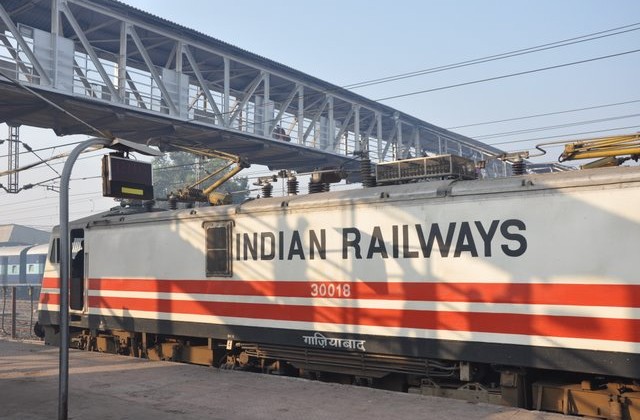Railway Budget
Railway Budget

The 92-year old custom of presenting Railway budget and general budget separately was eliminated by Modi government on 21 September, 2016 as last year, finance minister Arun Jaitley became the first one to present a combined Union budget 2017. The decision of merging Railway budget and union budget was based on Committee recommendations which was headed by NITI Aayog member Bibek Debroy. The tradition of a separate Railway budget which was started by the British, dates back in 1924. The decision was passed by a 10-member Acworth Committee which was headed by British economist William Mitchell Acworth. During that time the Railway Budget was about 84 per cent of the general budget as Railway revenue was the only major contributor for the nation’s GDP.
The first railway budget of Independent India was presented by India’s first finance minister Sir R.K. Shanmugham Chetty on November 26, 1947. As it was just a review of the Indian economy, no new taxes were imposed by the government. Also, the budget day for 1948-49 was just 95 days away. The finance portfolio was then handled by K.C. Neogy who held the office was just 35 days. John Mathai, the third Finance Minister of India presented the budget 1950-51. This was followed by C.D. Deshmukh who presented the first budget on the basis of adult franchise in the first elected Parliament.
1995 onwards, the government started preparing the budget papers in Hindi as well. Morarji Desai who became the finance minister in 1959, presented ten budgets till date. After Morarji Desai, Indira Gandhi who was then the prime minister took charge of the finance. H. M. Patel presented the shortest budget speech in 1977. After V P Singh quit his government, Rajiv Gandhi presented the budget for 1987-88. He was the only Prime Minister to present a budget after his mother and grandfather in the parliament. Yashwant Sinha presented the budget for 1991-92.
After the 1991 elections Manmohan Singh became the Finance Minister but this was the first time when when the interim and final budgets were presented by two different ministers of two different political parties. The final budget for 1996-97 was presented by P. Chidambaram. Due to a constitutional crisis, a special session of Parliament was convened only to pass Chidambaram’s budget of 1997-98. Mamata Banerjee became the first women Railway minister of India in 2000 and she is also the first female Minister to present the Railway budget.
Expectations from Railway budget 2018
- In what can be seen as a major demand in the present scenario, Odisha government has placed before the Centre a proposal of Rs 6,500 crore for consideration and inclusion in railway infrastructure development for the state in the 2018-19 budget.
- The demand includes detailed proposals for ongoing projects, sanctioning of new lines, station modernisation, introduction of new trains, extension of existing trains, improved passenger amenities at stations, on board services, establishment of rail-based industries, multi modal logistic parks and others.
- However, Piyush Goyal had said in November last year that the Railways is looking at innovative ways to finance its expenditure and does not need any funds from the Union Budget. He had also suggested that the Budget for 2018-19 can allocate more funds for public welfare to health and education out of the funds which will be saved from the Railways. Goyal, who after transforming the power sector took over the Railway portfolio in September, also stressed on an ‘efficiency’ hike rather than a fare hike.
- Passenger safety and basic amenities in the Railways sector is what Minister Piyush Goyal must be focusing on, considering the backlash his ministry has suffered due to rail accidents in the year 2017 with the latest Puri-Haridwar Utkal Express derailment in Uttar Pradesh last year that killed more than 20 and injured over 200 people.
Highlights Of Railway Budget:
- In its endeavour to provide a safe and secure travel experience to passengers, Indian Railways is pitching for the procurement of about 12 lakh CCTV cameras to ensure state-of-the-art surveillance systems in all trains and stations across the country.
The Railways will make a provision of around Rs 3,000 crore in its budget for 2018-19 to install CCTV systems in all 11,000 trains — including premier and suburban services — and all the 8,500 stations in the Indian rail network, to provide safety and security at rail premises. - As per the plan, while each coach will have eight CCTV cameras covering the entry gates, aisle and vestibules, all crucial points at stations will have the systems.
- Currently, there are about 395 stations and about 50 trains that are equipped with CCTV systems.
- “All mail/express and premier trains, including Rajdhani, Shatabdi, Duronto and local passenger services, will be equipped with the modern surveillance systems in the next two years,” said a senior Railway Ministry official.
- Railways is exploring various options to fund the installation of the CCTV surveillance systems — and may even raise resources from the market if needed.
- Given the increased number of derailments last year, the Rail Budget this time is slated to give top priority to safety and prevention of accidents — followed by improving passenger amenities to make the journey pleasant.
- Finance Minister Arun Jaitley would roll out the details of provision for strengthening safety mechanism in train operations in his Budget 2018-19.
- Elimination of 4,943 unmanned level-crossings, replacement of all old tracks and strengthening of the remaining tracks are among other safety-related proposals that will be highlighted in the budget.
